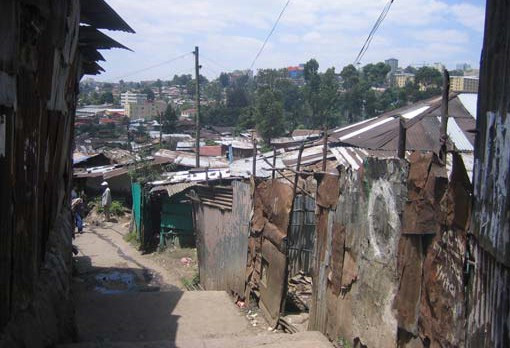5.3.1 Housing
In developing countries, about a third of urban inhabitants live in impoverished slums and squatter settlements (UN-Habitat, 2012). Slums are urban areas that are heavily populated and have sub-standard housing with very poor living conditions, creating several problems.
In Addis Ababa, a report in 2008 found that 80% of the houses in the city were classed as slums due to the physical deterioration of its housing, overcrowding, high density, poor access and lack of infrastructure services (Tolon, 2008) (Figure 5.5).

Slum areas typically suffer from:
- poor housing with small, overcrowded houses built very close together using inadequate materials and with uncertain electricity supply
- restricted access to water supplies
- little or no sanitation/latrine facilities and no solid waste disposal, which leads to a polluted and degraded local environment
- inadequate health care facilities which, coupled with the poor living conditions, increases sickness and death rates
- insecure living conditions – slum dwellers may be forcibly removed by landowners or other authorities.
Many low-income families gravitate to these informal settlements that proliferate in and around towns. Poverty is one of the most critical issues facing urban areas. Urban poverty degrades both the physical and social environment. This then makes it more difficult for people to escape from poverty and they fall victim to the ‘vicious cycle’ that you read about in Study Session 2.
5.3 Impacts of urbanisation
